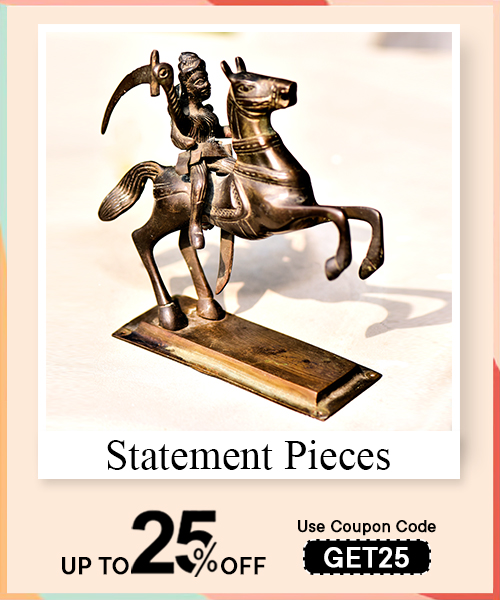Bhai Dooj is a festival celebrated two days after Diwali. It’s a special day for brothers and sisters. Sisters pray for their brothers' health and happiness, often doing a ritual where they put a mark (tilak) on their foreheads and share food. In return, brothers give gifts and promise to care for their sisters. It’s all about celebrating the love and bond between siblings. Different places in India have their ways of celebrating, but the main idea is the same everywhere.
Bhai Dooj in 2025 will be celebrated on Thursday, October 23.
According to the Indian calendar, Bhai Dooj is celebrated on the second day of the Shukla Paksha (the waxing phase of the moon) in the month of Kartika. This usually falls two days after Diwali, which is celebrated on the new moon night of the month of Kartika. In the lunar calendar, Bhai Dooj typically falls in October or November.
Bhai Dooj comes after Diwali as part of the festive celebrations that follow the festival of lights. Diwali signifies the victory of light over darkness and good over evil, while Bhai Dooj focuses on the bond between brothers and sisters. The timing allows families to celebrate Diwali's auspicious and spiritual aspects first and then dedicate a day to honoring familial relationships. It emphasizes the importance of love, protection, and care among siblings, making it a fitting continuation of Diwali's festive spirit.
Read More: Sheetala Ashtami: Celebrating Goddess Sheetala, Symbol of Healing | Festival Insights
Bhai Dooj is not a national holiday in India but a public holiday in several states. Many people celebrate it as a family occasion, so while it's widely observed, the recognition as an official holiday can vary by region. Some workplaces may give employees the day off, especially in areas where the festival is culturally significant.
Bhai Dooj is a vital festival celebrating the bond between brothers and sisters. It reinforces the values of love, protection, and mutual respect within families. This festival highlights the importance of familial ties, as sisters pray for their brothers' health and happiness while brothers promise to safeguard their sisters. It fosters a sense of security and affection among siblings. Additionally, Bhai Dooj encourages family gatherings, strengthening community bonds and promoting joy through shared rituals and festive meals. Celebrated soon after Diwali, it adds to the overall festive spirit, making it a cherished occasion that emphasizes the joy of relationships.
During the Tilak ceremony, sisters lovingly apply a ceremonial tilak on their brothers' foreheads, symbolizing their deep bond and role in protecting them. In return, brothers express their affection by presenting gifts to their sisters. This heartwarming exchange strengthens the sibling bond but adds a beautiful and meaningful tradition to their lives. The entire community joins in the celebration, and families join to partake in this particular occasion. It's a time filled with togetherness, happiness, and the creation of cherished memories. The festivities include preparing special meals, sharing traditional dishes and sweets, and enhancing the joyous atmosphere with delicious flavors.
The ritual of Bhai Dooj is that on this day, sisters pray for their brothers' health and prosperity, often reciting specific prayers or mantras. They also bless their brothers for success and happiness, sometimes after touching their feet. To celebrate, sisters serve a special meal to their brothers, which may include sweets and their favorite dishes.

- Perform the Tilak Ritual: Apply the tilak on your brother’s forehead with love and care.
- Pray Sincerely: Offer heartfelt prayers for your brother’s well-being and success.
- Prepare a Special Meal: Cook or serve your brother’s favorite dishes to make the day special.
- Exchange Gifts: Give or receive gifts that are thoughtful and meaningful.
- Dress Traditionally: Wear traditional attire to enhance the festive spirit.
- Celebrate Together: Spend quality time with family and loved ones to strengthen bonds.
- Make Sweets: Prepare traditional sweets like laddoos, barfis, or other festive treats to share.
- Use Fresh Ingredients: Ensure that the food prepared is fresh and hygienic.
- Offer Snacks: Include snacks and appetizers that everyone enjoys to keep the festivities lively.
- Share with Neighbors: Consider sharing food or sweets with neighbors to spread joy.
- Avoid Negativity: Don’t engage in arguments or negativity on this auspicious day.
- Don’t Ignore Traditions: Follow the rituals and customs as they are part of the celebration.
- Avoid Inappropriate Gifts: Be mindful of the gifts exchanged; choose something respectful.
- Don’t Rush the Rituals: Take time; rituals should be performed thoughtfully.
- Don’t Forget to Bless: Remember to bless your brother; it’s an integral part of the tradition.
- Avoid Spicy or Unpleasant Foods: Steer clear of overly spicy foods that might upset someone’s stomach.
- Don’t Waste Food: Prepare just enough food and avoid wasting it.
- Avoid Alcohol: It’s best to refrain from consuming alcohol, as Bhai Dooj is a family-centric celebration.
- Don’t Use Artificial Colors: Avoid artificial colors or unhealthy additives when making sweets or snacks.
- Avoid Conflicts: Resolve any ongoing disputes before the celebration to maintain a peaceful atmosphere.
Rules for Bhai Dooj are:
- Perform the rituals at the right time per local calendars.
- Keep the space clean and tidy for the celebrations.
- Cook special meals and sweets using fresh, good-quality ingredients to share with your brother.
- Show respect and love during the celebrations.
- Offer sincere prayers for your brother's well-being and success.
- Give thoughtful gifts that reflect your brother's interests.
- Encourage all family members to join the celebrations.
- Give heartfelt blessings to your brother.
- Resolve disputes before the celebration.
- Respect and honor local customs and traditions associated with Bhai Dooj.
Read More:Celebrate Ranga Panchami: A Colorful Hindu Festival of Joy and Unity
The significance of Bhai Dooj emphasizes the strong bond between brothers and sisters. It highlights the values of love, respect, and protection within sibling relationships. On this day, sisters pray for their brothers' well-being and success, while brothers promise to safeguard and support their sisters. This tradition, rooted in Indian culture, encourages families to come together and appreciate the importance of their relationships. Bhai Dooj reminds siblings to express gratitude and acknowledge their vital roles in each other's lives. Celebrated shortly after Diwali, Bhai Dooj extends the joy of the festive season and holds great significance in India's cultural heritage.
Legend has it that Bhai Dooj is connected to the heartwarming story of Yama, the God of Death, and his sister Yamuna. Yamuna eagerly awaited her brother's visit, and on the day of Bhai Dooj, Yama decided to visit her. Yamuna welcomed him warmly, preparing a delicious feast and decorating the place beautifully. In return, Yama granted her a boon, and she asked for all brothers who receive tilak from their sisters on this day to be blessed with long and happy lives. Since then, Bhai Dooj has been a celebration of sibling love, with sisters praying for their brothers' well-being.
Another story tied to Bhai Dooj involves Lord Krishna and his sister Subhadra. After Krishna defeated the demon Narakasura, he visited Subhadra, who greeted him with a tilak and sweets. She prayed for his health and happiness, and thus, the tradition of Bhai Dooj was born.
In addition to these central stories, various regions in India have their local legends and customs associated with Bhai Dooj. For instance:
- In some cultures, the festival is linked to the goddess Durga and the triumph of good over evil, celebrating the protection siblings offer each other against life's challenges.
- Specific communities may recount tales of mythological figures or local heroes whose stories resonate with familial love and protection values.
When Lord Rama returned to Ayodhya after living in the forest for 14 years and winning the battle against Ravana, everyone in the city was pleased. His family and the people of Ayodhya welcomed him with great excitement. Rama's sisters prepared for his return by performing traditional rituals similar to those of Bhai Dooj. They put a mark on his forehead and made special meals to show how much they cared for him. These rituals showed the strong bond and respect they had for each other. They prayed for Rama's happiness and well-being, showing their protective and caring relationship with their brother. In return, Rama blessed his sisters and promised to protect and care for them, which Bhai Dooj represents.
Raksha Bandhan and Bhai Dooj celebrate the bond between brothers and sisters, but they have differences in timing, significance, rituals, and cultural context. Raksha Bandhan is celebrated in August and symbolizes the protective bond between siblings. On this day, sisters tie a protective thread called rakhi around their brothers' wrists, and brothers give gifts and promise to protect their sisters. In contrast, Bhai Dooj is celebrated in October or November. It focuses on the love and duty between siblings, where sisters pray for their brothers' health and prosperity, and brothers give gifts while promising to care for their sisters.
Read More:Papmochani Ekadashi: A Journey of Spiritual Cleansing and Renewal
The rituals also differ; Raksha Bandhan involves tying the rakhi, performing aarti, and feeding sweets, whereas Bhai Dooj includes applying a tilak on the brother’s forehead and preparing special meals. While Raksha Bandhan is widely celebrated across India and among Indian communities globally, Bhai Dooj has more regional variations in customs and stories, emphasizing the unique dynamics of sibling relationships.















